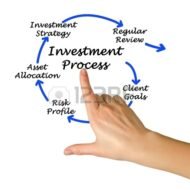Posted by Managementguru in Business Management, Principles of Management, Training & Development
on Mar 2nd, 2014 | 0 comments

MAN POWER PLANNING What is the meaning of man power development? This involves an accurate determination of the present and future man power needs of the enterprise. Also the assessment of the right kind of organization structure both present and projected which determines the number and kinds of managers and workers required, is called for. ELEMENTS OF MAN POWER PLANNING: 1. Present Man Power Position Analysis: An assessment and evaluation of present man power position is the first step in the process which involves data collection pertaining to name, age, educational qualification, training experience, specialized skills of the employees. This is done with the help of a man power inventory chart. 2. Man Power Inventory Chart: a) An overview of the present staffing situation of the company is known b) Prospective persons for promotion can be identified c) Future internal supply of human resource can be found out d) Lack of performance is pin pointed and either people can be replaced or trained suitably e) People on the verge of retirement are identified and plans are made to recruit suitable people to replace them f) People whose promotion is overdue but not implemented due to internal politics can be identified and justice can be done by the management. Pic Courtesy: SuccessFactors 3. Job Evaluation and Job Analysis: Job evaluation is a process to rate a job in the order of hierarchy and laying down specifications needed to carry out that job. This would high light the following information a) The nature of work done by the work force b) The method employed by them to do it c) The skills, education and training required to do it d) How a particular job is related to other jobs e) What are the physical environmental conditions to accomplish the task effectively After careful analysis a neat job description can be prepared for each job which would cover the following details. 4. Job Description: a) Name or title of the job b) Nature of duties and operations to be performed c) Authority, responsibilities and accountability d) Necessary qualification i.e., education, skills, training, experience etc. Pic Courtesy: Indiamart 5. Assessment of Long term and Short term Goals: The goals whether short term or long term is decided by the market demand, and sales forecasts. Determining these goals gives the company a clear picture as to where it is headed for in the future and the kind of man power requirement to satisfy the enterprise objectives. 6. Demand of Supply of Personnel: The demand for Labor is very high as we all know and it is inevitable for the organization to keep track in terms of man power inventory and requirement of present and future. You cannot hire any X, Y OR Z for a particular job. Inter departmental transfers can provide a temporary solution if a void is created for a specific position but it will not work out in the long run. “The ultimate objective of man power planning is to fill the demand and supply...

Posted by Managementguru in Financial Management, Principles of Management
on Feb 28th, 2014 | 0 comments

What forms the Basis for your Investment Decisions? Profit seeking is the ultimate aim of corporate management and the finance manager acts as the anchor point of the management structure. He has to provide specific inputs into the decision-making process, with respect to profitability. Corporate Investment Decisions Cost control What are the Cost Centres? It is the finance manager’s responsibility to have an eagle’s eye on rising costs by continuously monitoring the cost centers of his organization. Production department where there is always a need for additional resources or inflow of funds, should be his first target of contol. Costs are incurred by each and every department of an organization, namely, the production, marketing, personnel and of course finance and accounting. It is a difficult task to control the rising costs. That is the reason why, big corporate companies go for annual budget formulation at the start of the year and reformulates the finance plan by comparing actual with the projected figures. This kind of evaluation helps the firm to fix responsibilities for various centers of operation. Resource Allocation A finance manager is the first person to recognize rising costs for supplies or production, and he can make immediate recommendations to the management to bring back costs under control. While cost control talks about allocating resources to different responsibility centers in the desired proportion, cost reduction focuses on conserving the resources. Cost reduction can be achieved through modifying product and process designs, cutting down throughput time, doubling labor productivity, mass customization, standardistion etc., Pricing Price Fixation It is always a joint venture between marketing and finance departments when it comes to price fixation of products, product lines and services. Pricing decisions are important in that, they affect market demand and the company’s competitive stand in the market. Pricing strategies have to be evolved in the wake of existing competitor strategies and market preference. The demand forecast is the prerequisite factor of the production process and in-depth market analysis and understanding is inevitable on the part of the executives. Future Levels of Profit The finance manager is also responsible for charting out the future levels of profit, based on the relevant data available. He has to consider the current costs, likely increase in costs and likely changes in the ability of the firm to sell its products at the established selling prices. So, it becomes clear that, such market evaluation cannot be periodical, as the market is highly dynamic and has to be done in a day-to-day basis. Before a firm commences a project, its discounted future fund flow and expected profits must be ascertained which will serve as a basis for comparison. Risk versus Return: Investment decisions always are risky as the gestation period of invested funds is very long and not to return immediately. Further, the firm has to calculate the time period in which its initial investment can be recovered and the feasibility of the rate of return on its investment. Fund Management The finance manager is engaged in activities like, mobilization of funds, deployment of funds, and control over the use of funds and also he is to evaluate the risk return trade-off. Profit maximization is the fundamental objective of any organization and the finance manager plays a key role in restructuring the financial philosophy of a firm to take it to greater...




